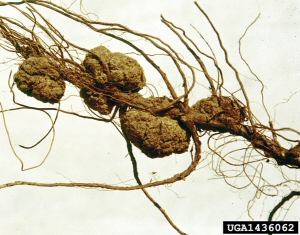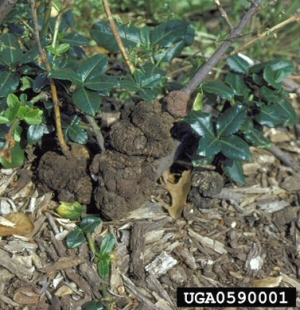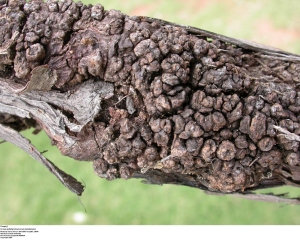Crown Gall
Causal Agent
Agrobacterium tumefaciens
 Hosts
Hosts
More than 600 plant species in over 90 families are susceptible, although relatively few species sustain significant damage. Some of the common hosts include apple, blackberry, cherry, euonymus, forsythia, grapes, peach, pear, plum, poplar, raspberry, rhododendron, rose, and willow.
Symptoms

 Control
Control
If only a few galls are present, cut off and destroy the stems on which they occur. Dip pruning shears in a 10 percent bleach solution between prunes to prevent the spread of the bacteria. Heavily infected plants should be removed and destroyed. Good control can be achieved by treating barerooted nursery stock with an antagonistic strain of Agrobacterium prior to transplanting. Please contact your local county extension office for the most current information.


